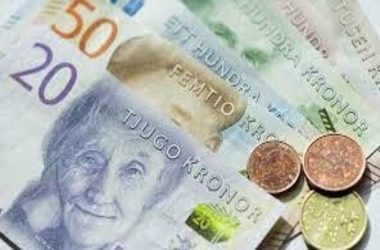 The USDSEK increased 0.0806 or 0.92% to hit a high of 8.8215 on Wednesday from 8.7409 in the earlier trading session following a series of weak economic data (industrial output, household consumption and industrial orders) from Sweden and upbeat non-farm employment change data from the US.
The USDSEK increased 0.0806 or 0.92% to hit a high of 8.8215 on Wednesday from 8.7409 in the earlier trading session following a series of weak economic data (industrial output, household consumption and industrial orders) from Sweden and upbeat non-farm employment change data from the US.
With the strong non-farm payrolls data, the market is certain that the US Fed will start reducing bond purchases (tapering) from November onwards. Currently, the Fed purchases $120 billion worth government bonds every month to support the economic rebound (stimulus program).
Sweden’s industrial production rose by 0.8% y-o-y in August, after a 13.3% rise in the earlier month. It was the seventh month in a row that industrial activity increased, but the pace of growth was the slowest in the current series. Manufacturing output growth eased considerably (1% compared. 14.9% in July), while mining and quarrying output fell (-2.5% vs -13%).
Industrial output fell 3.7% on a seasonally adjusted monthly basis, the highest since April 2020, after a downwardly revised 1% increase in the prior month. Cumulative orders obtained by Swedish industries increased 2.3% y-o-y in August 2021, falling short of market expectations of a 14.8% increase and after a downwardly amended 13% increase in July.
It was the eleventh month in a row that aggregate orders increased, although it was the weakest in the current series as low base influences disappeared. Orders from overseas clients dropped significantly (0.6% versus 15.5% in July), while orders from the local market declined at a far more decent pace (4.6% vs 6.6%). Orders fell by 2.4% on a seasonally adjusted monthly basis, after an upwardly revised 1.5% drop.
In August 2021, household spending in Sweden dropped 1.1% from the earlier month, after a 0.8% rise the prior month. It was the foremost drop in spending since April, with reduced consumption in eateries, coffee shops, goods and services (-10.2% vs 41.7% in July), post and telecommunications (-5.5% vs -0.1%), transportation, retail trade & service of motor vehicles (-2.2% vs -0.4%), and food & beverages (-0.1% vs -1%).
Spending on clothing and footwear, on the contrary, grown rapidly (1.9% vs 0.2%) and for entertainment and culture, goods and services (0.9% vs 0.7%), while it recovered for housing and utilities (0.1% vs -0.5%) and furniture, furnishings, household goods, and consumables (0.5% percent vs -2.5%). Household consumption increased by 4.6% y-o-y.
In September 2021, private companies in the United States recruited 568,000 employees, the highest in three months, in contrast to a downwardly amended 340,000 in August and above the market forecasts of a 428,000 increase.
The recreation and hospitality industry generated the most employment (266,000), followed by education and health (66,000), professional and business (61,000), commerce, transportation, and utilities (54,000), financial activities (22,000), and information (11,000).
The increase was led by manufacturing (49,000), construction (46,000), and natural resources and mining (7,000). Companies with 500 or more workers added the most employment (390,000), followed by mid-sized (115,000) and small businesses (63,000).




